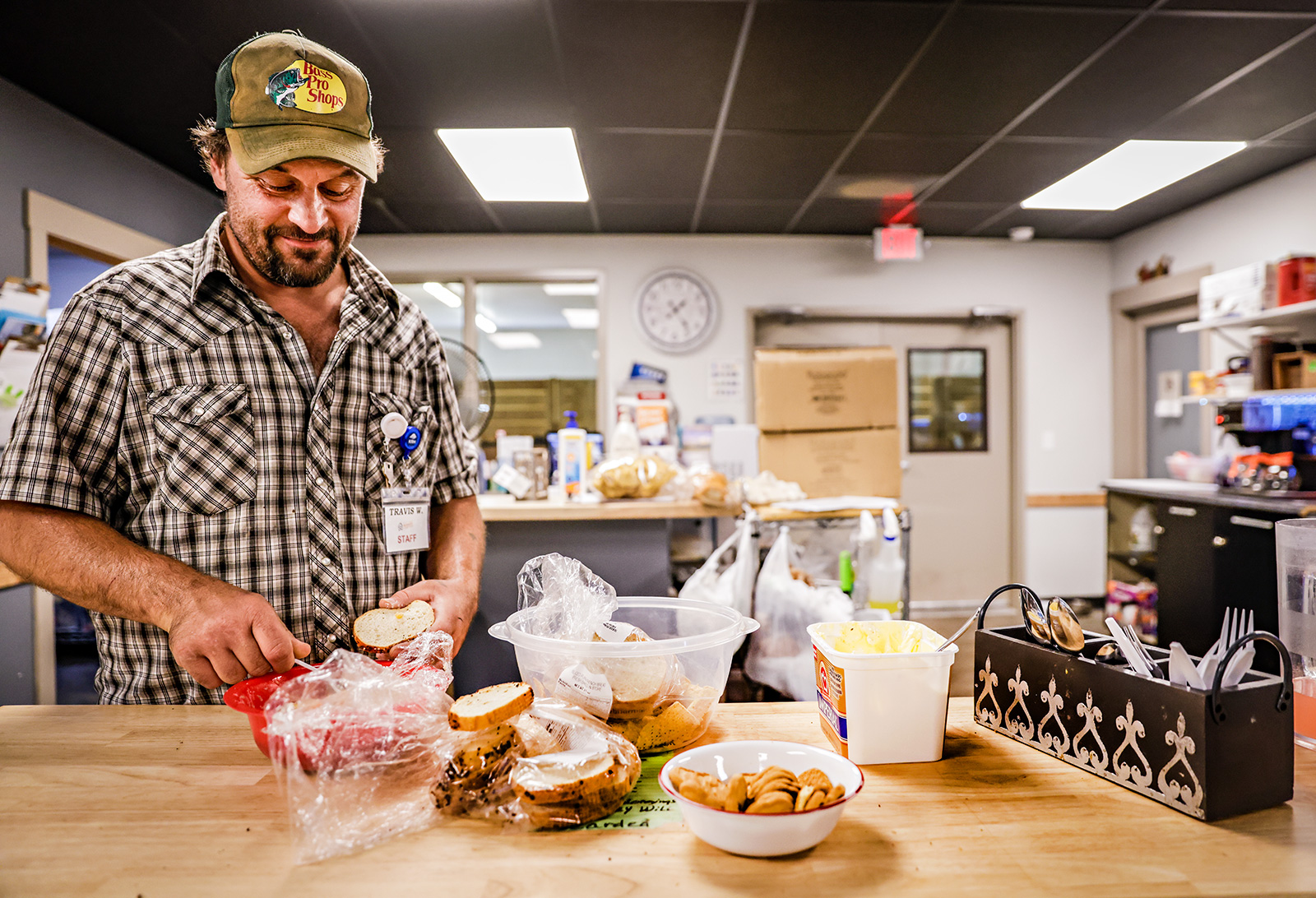Social Service Providers Expand Reach in Annual Homeless Population Count
Nonprofit leaders finished collecting data for the Point-in-Time survey during the last week in January with hopes of obtaining a more accurate count in outlying communities
By Maggie Dresser
Flathead Valley social service providers finished their annual Point-in-Time (PIT) count this week, a survey that estimates the volume of the homeless population and whether they are sheltered or unsheltered.
Leaders from organizations like Community Action Partnership of Northwest Montana (CAPNM) and the Samaritan House worked together to conduct the surveys in a new and more effective way by hosting pop-up events throughout the valley during the last week of January.
Historically, Northwest Montana United Way has hosted a Winter Warmup event where surveys were conducted, but Sean O’Neill, the Community Services Department Director at CAPNM, said fewer people were showing up each year, which resulted in inaccurate data collection.
This year, providers hosted pop-up events across the valley at locations like the North Valley Food Bank, ImagineIF Libraries in Kalispell and at community dinners in Bad Rock Canyon.
“We are doing something different to maybe touch those folks that we weren’t seeing coming into Kalispell from places like Coram,” O’Neill said.
The data collected in Flathead County is then funneled through the Montana Continuum of Care Coalition, a state agency that helps identify gaps in care, and is also sent to the United States Department of Housing and Urban Development (HUD) and becomes part of a national count.
According to HUD, the annual survey also tracks how many individuals experiencing homelessness are sheltered in an emergency center, transitional housing and Safe Havens on a single night.
In 2022, there were 319 homeless people in the Kalispell area, comprising 20.1% of the state’s homeless population and ranking second only behind only Missoula, which has the highest concentration with 20.5%, according to PIT data.
During the same year, Kalispell had the highest number of homeless individuals with disabling conditions — 149 individuals compared to Missoula’s 137.
“We are hearing of so many folks who are senior, disabled or youth at such a rate that’s kind of terrifying,” O’Neill said. “Our chronically homeless population quadrupled in three years and the state of Montana has gone up by 551% since 2007.”
Last year, surveys counted 263 homeless people in Kalispell, far fewer homeless folks than 2022 data revealed.
But O’Neill says the 2023 data is not reflective of the Flathead’s actual homeless population due to last year’s timing of the Winter Warmup event, which is always scheduled for the last Thursday in January.
In response to public complaints about a heightened visibility of homeless people in public spaces, Flathead County Commissioners Pam Holmquist, Randy Brodehl and Brad Abell on Jan. 21, 2023 wrote an open letter entitled “Stop Enabling Homeless Population,” which was published in several local media outlets.
Days before the warmup event, the Kalispell City Council began discussions about new ordinances that were designed to limit occupancy in public park facilities following complaints. The ordinances passed in February.
“We got a lot of feedback from folks a month later of the people we missed,” O’Neill said. “A lot of them felt unsafe and uncomfortable and they hid. They were really scared to be out in public and we weren’t able to connect with them.”
Samaritan House Director Chris Krager agrees that a negative rhetoric surrounding homelessness last year contributed to an inaccurate count.
“The community conversation about homelessness had taken a pretty heavy turn that affected the homeless survey last year,” Krager said. “This year, I’m really optimistic about it and I think it’s going to be more accurate.”
But providers say data collection is always challenging because not every homeless person attends the events and it’s an uncomfortable experience for vulnerable individuals.
“It’s a whole bunch of very invasive questions and it’s not the easiest survey to conduct, especially if they are not familiar with you,” O’Neill said.
O’Neill said he hopes providers can get a better count of people living in communities beyond Kalispell, including areas to the south in Somers and to the north in Bad Rock Canyon, where unsheltered individuals might not be obtaining services.
While providers extend services in outlying communities, there are few brick-and-mortar facilities in rural areas and it’s unlikely nonprofits will have the capacity to expand in the future, despite the need.
Nonprofit leaders also partner with health centers in neighboring areas like Lake and Lincoln counties, which also have few services that don’t meet the demand of rural homeless populations. Many folks in the areas don’t engage in services and have instead built their own network of support. But O’Neill said these independent models are not sustainable.
“That’s been the biggest challenge – how can we really capture that rural homelessness? It’s a much bigger issue than we portray with these surveys,” O’Neill said.